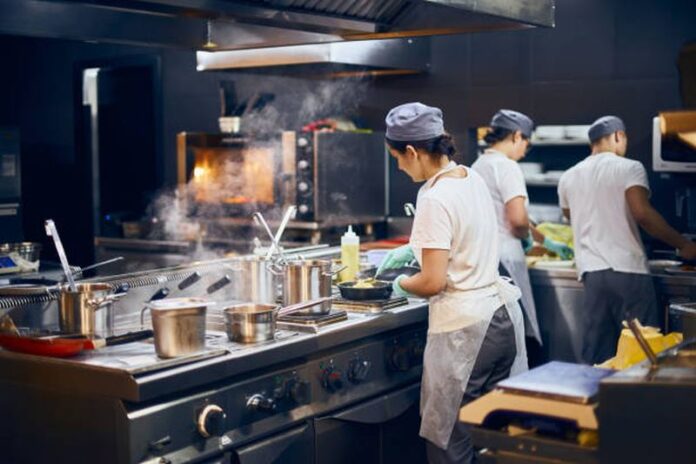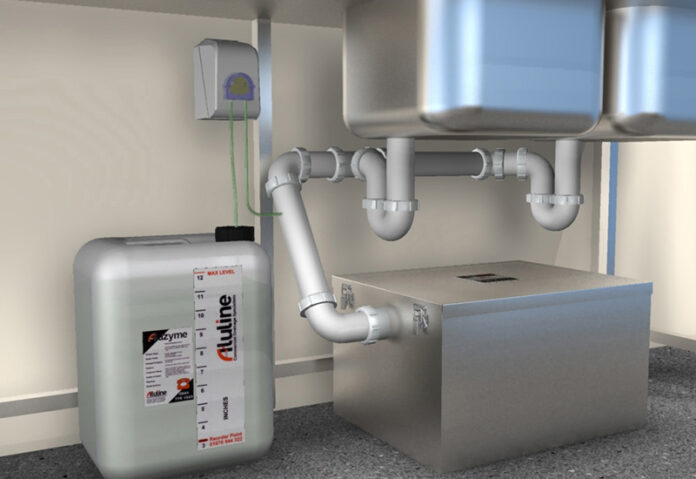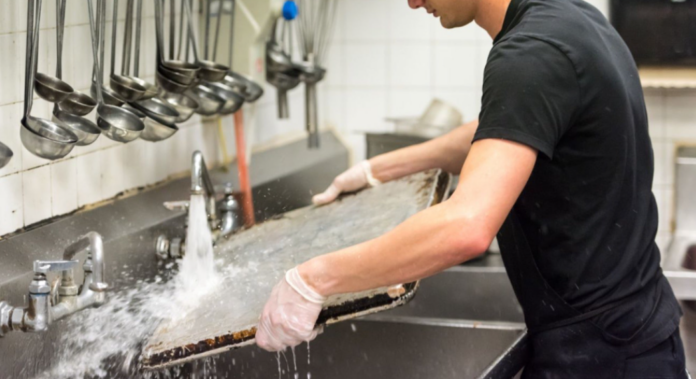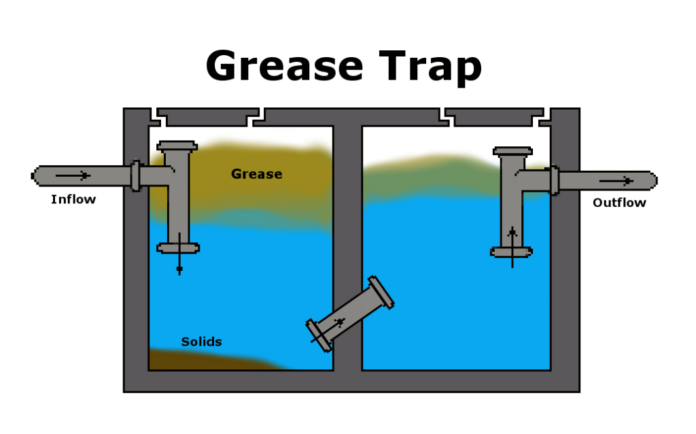
Every commercial kitchen needs a grease trap. Grease traps tap into plumbing but into a separate area where grease and solids are stored before being disposed into the waste system. There are many reasons why grease traps are important to commercial kitchens.
But there isn’t a more important thing than to schedule regular maintenance. Regular maintenance leads to a more effective and hygienic operation. If the grease trap isn’t regularly maintained, it could lead to several problems such as blockages and grease backups.
Many of these problems could compromise your business. If the health and safety inspection deems your grease trap to be unserviceable, they could potentially close your business.
So with all that said, proper maintenance is important. And here are the tips on how to do that effectively and hygienically.

The One-Quarter Rule
Over the years, restaurants and commercial kitchens have explored the most effective ways to clean grease traps. None have been proven to be more effective than the one-quarter rule. This rule tells owners to clean the grease trap whenever one quarter is full. But why exactly one quarter? Why this specific number?
Apart from being a standard throughout the world, the one-quarter rule tells us that the trap won’t work effectively beyond 25% full. So how much time does that give you?
For the container to fill to 25%, it can last anywhere between a month and three months. It all depends on how much you’re using the kitchen and how much grease you’re disposing of. But generally speaking, one to three months is usually the timeframe to go for.
You can even go beyond that and mark the trap at 25% depth. If the trap is bigger, you have more time to work with it. But if it’s much smaller, you’ll have to clean it regularly; every few weeks. So if you want to save the time and energy of frequently cleaning, consider getting a much bigger one.
If not, schedule regular maintenance and follow the one-quarter rule.
Check the Water Temperature

The whole point of using this system is to prevent grease and different oils to go into the sewer system. Because of that, it’s important to take all the necessary precautions. One such precaution is to watch the water temperature. Since most commercial kitchens use hot water to wash down dishes, it should go without saying that the temperature shouldn’t go above the boiling point of the various substances.
For example, 144 degrees F is never a temperature you should wash dishes with. 144 degrees F melts these substances, which then go into the sewer system. So if you are using hot water to wash down dishes in your commercial kitchen, be mindful of the temperature. The reason why you should be aiming at above that temperature is that, once grease, fats, and oils boil down, they solidify once cooled down.
Solids should never go into the sewer system as they can effectively clog it. If that does happen, you’re in a world of trouble. But since not every commercial knows this, chances are some of you are doing it. Once these substances clog the sewer system, you will need to get your hands dirty. But instead of doing that, you can hire a professional grease trap service to do the job for you. If you’re interested in that, make sure to give houstontxgrease.com a visit.
When You Can, Don’t Put It In the Drain

One of the best practices to prevent clogs and unwanted problems is to never dispose of grease down the drain. Even if you have a grease trap, that doesn’t mean you should actively do it.
This tip is very easy to do and will take only a second of your time. Before washing the dishes, make sure to dispose of the substances in the garbage. If plates have unfinished foods, put them in the garbage or collect them in a container. You can then give the food to stray animals that would love you for it.
If you dispose of grease foods down the drain, you’re only making things difficult for the grease trap. Even if you have a waste grinder in your sink, that won’t prevent the grease from going into the sewers.
Despite being a revolutionary commercial kitchen invention, a grease trap should be the last resort. This is a proper disposal management tip that solves a lot more issues than it causes. So it would be wise to do that before washing dishes.
Never Clean the Grease Trap With Solvents or Enzymes

Despite our best efforts, some fats and oils do make their way into the trap. It’s simply the way commercial kitchens work. When busy hours hit, commercial kitchen workers, don’t have the time to manually clean every plate or oil and fats.








